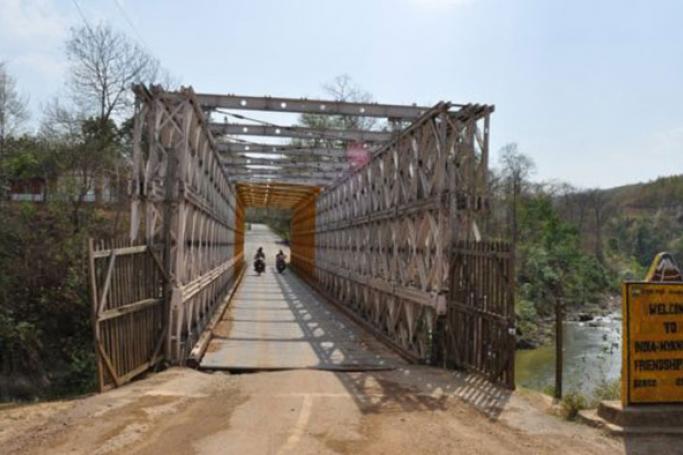The BCIM Economic Corridor is the economic link connecting the Ganges River of India, the Ayerwaddy River of Myanmar, and the Mekong River of Indo-China. It is the lead bridge connecting the Pacific Ocean and the Indian Ocean. It is a market focus point for China, South and South East Asia. Therefore, building of the BCIM Economic Corridor conforms to the common interest requirements of the sub regional countries’ economic and social development.
The BCIM Economic Corridor includes four priority fields: the infrastructure, constructing of connectivity, the cooperation development of industrial parks, and the international finance opening of cooperation and the formation of a systematic mechanism.
Out of several sub-regional spatial trends of the BCIM Economic Corridor one particular construction is the China-Myanmar oil and gas pipeline. In this context Myanmar and China signed a 770 km crude oil and gas pipeline during the recent visit of President U HtinKyaw to China. The project which went into operation within a few days after signing, will annually transport up to 22 million metric tons of crude oil to China. It happens that this oil pipeline runs parallel to the Chinese gas pipeline that also runs to China. In the same occasion of signing the oil pipeline project, the Exchange of Letter on Implementation of the Deep Sea Port Project and Industrial Park Project in Kyaukphyu also took place.
China’s choice of Kyaukphyu as a Deep Sea Port could be taken as to circumvent the Malacca Straits, while the Kyaukphyu Economic Zone could be a key to the Myanmar, Bangladesh and North East India Economic Corridor. It is good that through the Kaladan River one could easily reach North East India via Mizoram. As at now, the Chinese Province of Yunnan is connected to the Bay of Bengal and the Indian Ocean and also North East India using Kyaukphyu as a transport centre.
Another connectivity that should be taken into consideration is building a link between Yunnan and the South Eastern part of Myanmar, that is, Mawlamyine and Dawei, through Mandalay, those of which are end points for the West-East Transport Corridors between Vietnam and Myanmar connecting Quy Nhou and VungThuu with Dawei, and Danang with Mawlamyine. In fact, Dawei is not far from Myeik (Mergui) and the township Thai local authorities are recently attempting to modernize connectivity between Myeik (Myanmar) and Prachuap Khirikhan (Thai) and establish a Deep Sea Facility. Myeik is a coastal town in Andaman Sea and the Thai town Prachuap Khirikhan is not far from the Eastern coast of Gulf of Thailand and the Yunnan link with Myeik would lead to boosting bilateral trade. In fact Dawei and Myeik, lying in the Tanintharyi Division of Myanmar could definitely be used as good Deep Sea Ports. According to local sources a Chinese State Company, the China National Fisheries Corporation, has already carried out logistical studies and surveys earlier this year.
It is also learnt that another Chinese company has also completed a feasibility study so as to decide the best route for the proposed Kra Canal, Thailand, situated to the south of Myanmar’s far south.
Mawlamyine which has close trade relations with Thailand is increasingly seen as an important transport link connecting landlocked Yunnan and the South East Asia market. More efforts should be made by both governments to make use of Mawlamyine as an investment hub also for port and industry purposes.
The Myanmar government has recently announced four Dry Ports and adoption of plans for building more State highways and roads across the country. In this connection both countries should meet and exchange ideas how to link Myanmar’s projected road plans and the 1,400km India (Megalaya), Myanmar, Thailand Highway Project, with the plans of the BCIM or OBOR and reviving of the Ledo Road.
On March 2, 2017 the Myanmar Tourism Forum was formed by the Myanmar Ministry of Hotels and Tourism and the China National Tourism Administration, with the support of the Chinese Embassy in Yangon and the Yunnan Government. In this context, both sides should exchange ideas on the tourism mindset of Myanmar and Chinese people. This is because many have failed to recognize important cultural-community imperatives especially from the Myanmar side.
Meanwhile, bitter lessons should be taken from the experiences in respect of Myitsone Dam, Mongywa Copper Mine and Kyaukphyu-Yunnan Rail Line Project. In order to avoid misunderstanding between the two countries any State Corporations or companies or person or persons should understand and adhere to the Fundamental Principles of BCIM and the stated “People to People” objectives set out in the OBOR policy documents while Myanmar should take advantage or the One Belt One Road in conformity with the set principles and regulations of OBOR.
You are viewing the old site.
Please update your bookmark to https://eng.mizzima.com.
Mizzima Weekly Magazine Issue...
14 December 2023
Spring Revolution Daily News f...
13 December 2023
New UK Burma sanctions welcome...
13 December 2023
Spring Revolution Daily News f...
12 December 2023
Spring Revolution Daily News f...
11 December 2023
Spring Revolution Daily News f...
08 December 2023
Spring Revolution Daily News f...
07 December 2023
Diaspora journalists increasin...
07 December 2023
World Bank rep optimistic about Myanmar’s economy












